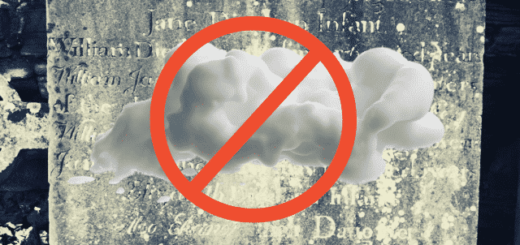Uncovering Ancestral Insights: 9 Discoveries Await You in the Cemetery

Fall is the ideal season for visiting cemeteries (accompanied by a genealogy buddy for fun and safety). Gazing upon gravestones and looking at cemetery records could reveal new information on your ancestry that you won’t find online databases of burials – though they still provide useful data. Here are nine things a cemetery visit could teach us about our relatives:
1. Name, Birth & Death Dates
Generally speaking, tombstones will include the deceased’s name (or sometimes “his wife”) as well as at least their year of birth and death. You might also discover their parents’ names; one of my family cemeteries offers a searchable database that includes parents’ names when available – this was where I discovered mine for Elizabeth Butler Norris! (Visiting this cemetery will help ensure you access records that may hold additional information beyond what’s found online!)
2. Relationships
These may be noted on a stone itself or deduced through nearby stones and further research; I found two “mystery men” buried in my family plot; further research led me to my third-great-grandmother’s first marriage.
3. Babies who were born between censuses or before official birth records could have been released are difficult to trace without some help, since you don’t know exactly when or where they died. Some family cemeteries offer infant-specific sections; small stones often become hidden by overgrowth over time; so searching databases or cemetery office records might give more clues than family plot markers alone.
4. Military Service
A marker or plaque placed by the government could indicate military service for your loved ones; my grandpa’s headstone includes his rank and branch information. Download our How to Find Military Records ebook for more details on using military records.
5. Maiden Names Maiden names for women can often be found on grave markers and burial records; or by researching those buried nearby.
6. Membership to fraternal societies, religious organizations or unions can often be revealed on gravestones through symbols. Here’s a list of gravestone symbols and their interpretations that can lead you to records of fraternal societies or unions.
7. Birth Place of Immigrants
While I haven’t come across it during my own research, experts in genealogy advise checking burial records and gravestones for immigrant birth places.
8. Religion
This information should be included on any burial record for someone buried at a cemetery affiliated with a particular faith; otherwise, simply providing details about where services were conducted would suffice.
9. Cause of Death
Rarely, causes of death will be listed on a headstone like those on this Rootsweb page – such as “was killed by falling from a building” and “while viewing a span of horses he was suddenly kicked by one in his lower part.” Instead, clues may provide insights for your research: when two gravestones with similar death dates point your research in one direction (ie: both graves shared the same date), an epidemic might have spread at that same time or when young men died during military service during wartime (ie, your research).



